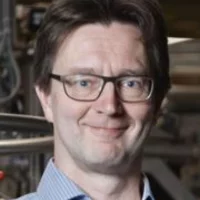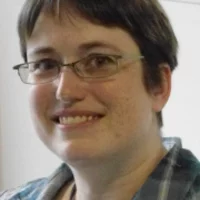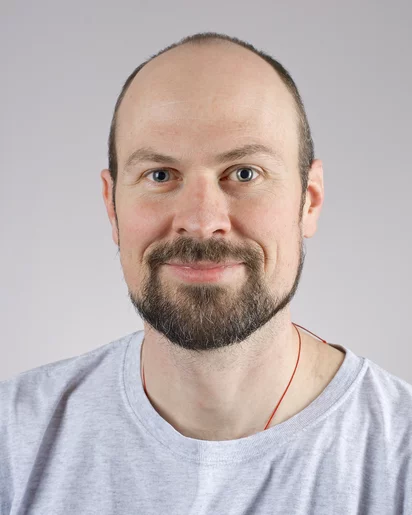Biography
Benjamin Watts is a beamline scientist at the PolLux scanning transmission soft X-ray spectro-microscope (STXM) specialising in the materials analysis of soft matter. He obtained a BSc (Professional) in Physics, with Honours, and a PhD in Physics from the University of Newcastle, Australia, before working as a post-doctoral researcher with North Carolina State University (permanently stationed at the Advanced Light Source, Berkeley) in the USA and then moving to PSI. Details of the interactions between soft X-ray light and organic materials has been a continuing theme throughout both his university research and later career.
Institutional Responsibilities
Operation, maintenance and improvement of the PolLux beamline and STXM endstation (and related infrastructure), as well as the coordination and support of external user-groups in their use of this instrumentation and the subsequent data analysis and publication of results. This includes the conceptualisation, design and implementation of hardware and software to extend the technical capabilities for new scientific opportunities. Benjamin Watts also works with the NeXus data format group to improve standardisation in the digital recording of scientific data and is currently Chair of the NeXus International Advisory Committee.
Scientific Research
The core of Benjamin Watts' research involves the use of soft X-ray spectroscopy and microscopy of organic materials, especially near-edge X-ray absorption fine structure (NEXAFS or XANES) spectroscopy at the carbon K-edge and scanning transmission X-ray microscopy (STXM). C K-edge NEXAFS provides spectral fingerprints corresponding to types of molecular bonding present in the sample material and so allows differentiation between organic materials based on their molecular structure. X-ray microscopy techniques such as STXM can then utilise this spectroscopy as a contrast mechanism to create quantitative nanoscale maps of materials properties such as composition, molecular conformation and mass density. Of particular interest is the imaging of nano-structures in conjugated polymer based electronic devices, such as OLED's and polymer solar cells, which are creating revolutions in the digital display and energy industries. Benjamin Watts also has strong interest in developing novel data analysis methods, improved data collection and storage formats, and the programming of data analysis tools with graphical user interfaces, which each represent key facets of the dissemination of knowledge.
Selected Publications
For an extensive overview we kindly refer you to our publication repository DORA.
From 2D STXM to 3D imaging: soft X-ray laminography of thin specimens , Katharina Witte, Andreas Späth, Simone Finizio, Claire Donnelly, Benjamin Watts, Blagoj Sarafimov, Michal Odstrcil, Manuel Guizar-Sicairos, Mirko Holler, Rainer H. Fink & Jörg Raabe, Nano Letters 20(2), 1305-1314 (2020) DOI: 10.1021/acs.nanolett.9b04782
X-ray tomography has become an indispensable tool for studying complex 3D interior structures with high spatial resolution. Three-dimensional imaging using soft X-rays offers powerful contrast mechanisms but has seen limited success with tomography due to the restrictions imposed by the much lower energy of the probe beam. The generalized geometry of laminography, characterized by a tilted axis of rotation, provides nm-scale 3D resolution for the investigation of extended (mm range) but thin (μm to nm) samples that are well suited to soft X-ray studies. This work reports on the implementation of soft X-ray laminography (SoXL) at the scanning transmission X-ray spectromicroscope of the PolLux beamline at the Swiss Light Source, Paul Scherrer Institut, which enables 3D imaging of extended specimens from 270 to 1500 eV. Soft X-ray imaging provides contrast mechanisms for both chemical sensitivity to molecular bonds and oxidation states and magnetic dichroism due to the much stronger attenuation of X-rays in this energy range. The presented examples of applications range from functionalized nanomaterials to biological photonic crystals and sophisticated nanostructured magnetic domain patterns, thus illustrating the wide fields of research that can benefit from SoXL.
Hessian Splines for Scanning Transmission X-Ray Microscopy, Thomas Debarre, Benjamin Watts, Benedikt Rösner & Michael Unser, 2020 IEEE 17th International Symposium on Biomedical Imaging (ISBI), 199-202, (2020), DOI: 10.1109/ISBI45749.2020.9098539
Scanning transmission X-ray microscopy (STXM) produces images in which each pixel value is related to the measured attenuation of an X-ray beam. In practice, the location of the illuminated region does not exactly match the desired uniform pixel grid. This error can be measured using an interferometer. In this paper, we propose a spline-based reconstruction method for STXM which takes these position errors into account. We achieve this by formulating the reconstruction problem as a continuous-domain inverse problem in a spline basis, and by using Hessian nuclear-norm regularization. We solve this problem using the standard ADMM algorithm, and we demonstrate the pertinence of our approach on both simulated and real STXM data.
7 nm Spatial Resolution in Soft X-Ray Microscopy, Benedikt Rösner, Frieder Koch, Florian Döring, Vitaliy A. Guzenko, Markus Meyer, Joshua L. Ornelas, Andreas Späth, Rainer H. Fink, Stefan Stanescu, Sufal Swaraj, Rachid Belkhou, Benjamin Watts, Jörg Raabe & Christian David, Microscopy and Microanalysis 24, 270–71, (2018), DOI: 10.1017/S1431927618013697
X-ray microscopy and spectroscopy are powerful tools to gain valuable insight into many exciting, scientifically relevant samples. Development in microscopic methods has always aimed for achieving spatial resolutions as high as possible. Although highly confined X-ray beams with spot sizes well below 10 nm have been characterized in recent years using mirrors, Fresnel zone plate (FZP) lenses or multilayer Laue lenses, X-ray imaging with single-digit nanometer resolution remains an extreme challenge. We report on unprecedented spatial resolution down to 7 nm achieved at two soft X-ray microscopes using photon energies between 700 eV and 850 eV. The experiments were performed at the scanning transmission X-ray microscopes (STXM) at the PolLux beamline at the Swiss Light Source and the Hermes beamline at Synchrotron Soleil. The scientific applications of these two instruments lie in the combination of microscopy and spectroscopy, where high spatial resolution provides a major benefit for scientific research.
Controlling optics contamination at the PolLux STXM, Benjamin Watts, Nicolas Pilet, Blagoj Sarafimov, Katharina Witte & Jörg Raabe, Journal of Instrumentation 13, C04001, (2018), DOI: 10.1088/1748-0221/13/04/C04001
Contamination of X-ray mirror surfaces by carbon is a common issue that can significantly degrade the optical performance of the instrument. The effects can be severe at photon energies near the carbon K-edge (ca. 300 eV), where the X-rays are strongly attenuated, but also significant at higher photon energies where the carbon coating affects the reflectivity and surface shape of the mirrors. [1] The Swiss Light Source has typically relied on in-situ plasma cleaning to control mirror contamination and the PolLux scanning transmission X-ray microscopy (STXM) beamline has also been employing further contamination reduction strategies in recent years. In particular, in 2014 we installed a 1×10−8 mbar background pressure of O2 on the PolLux first mirror chamber. We present a history of efforts to control optical contamination at the PolLux beamline and report on the observed efficiencies of the different processes employed both for the in-vacuum optics and critical components of the frequently vented STXM experiment chamber.
Highly Crystalline C8‐BTBT Thin‐Film Transistors by Lateral Homo‐Epitaxial Growth on Printed Templates, Robby Janneck, Nicolas Pilet, Satya Prakash Bommanaboyena, Benjamin Watts, Paul Heremans, Jan Genoe & Cedric Rolin, Advanced Materials 29, 1703864, (2017), DOI: 10.1002/adma.201703864
Highly crystalline thin films of organic semiconductors offer great potential for fundamental material studies as well as for realizing high‐performance, low‐cost flexible electronics. The fabrication of these films directly on inert substrates is typically done by meniscus‐guided coating techniques. The resulting layers show morphological defects that hinder charge transport and induce large device‐to‐device variability. Here, a double‐step method for organic semiconductor layers combining a solution‐processed templating layer and a lateral homo‐epitaxial growth by a thermal evaporation step is reported. The epitaxial regrowth repairs most of the morphological defects inherent to meniscus‐guided coatings. The resulting film is highly crystalline and features a mobility increased by a factor of three and a relative spread in device characteristics improved by almost half an order of magnitude. This method is easily adaptable to other coating techniques and offers a route toward the fabrication of high‐performance, large‐area electronics based on highly crystalline thin films of organic semiconductors.
The NeXus data format, Mark Könnecke, Freddie A. Akeroyd, Herbert J. Bernstein, Aaron S. Brewster, Stuart I. Campbell, Björn Clausen, Stephen Cottrell, Jens U. Hoffmann, Pete R. Jemian, David Männicke, Raymond Osborn, Peter F. Peterson, Tobias Richter, Jiro Suzuki, Benjamin Watts, Eugen Wintersberger & Joachim Wuttke, Journal of Applied Crystallography 48, 301-305, (2015), DOI: 10.1107/S1600576714027575
NeXus is an effort by an international group of scientists to define a common data exchange and archival format for neutron, X-ray and muon experiments. NeXus is built on top of the scientific data format HDF5 and adds domain-specific rules for organizing data within HDF5 files, in addition to a dictionary of well defined domain-specific field names. The NeXus data format has two purposes. First, it defines a format that can serve as a container for all relevant data associated with a beamline. This is a very important use case. Second, it defines standards in the form of application definitions for the exchange of data between applications. NeXus provides structures for raw experimental data as well as for processed data.


